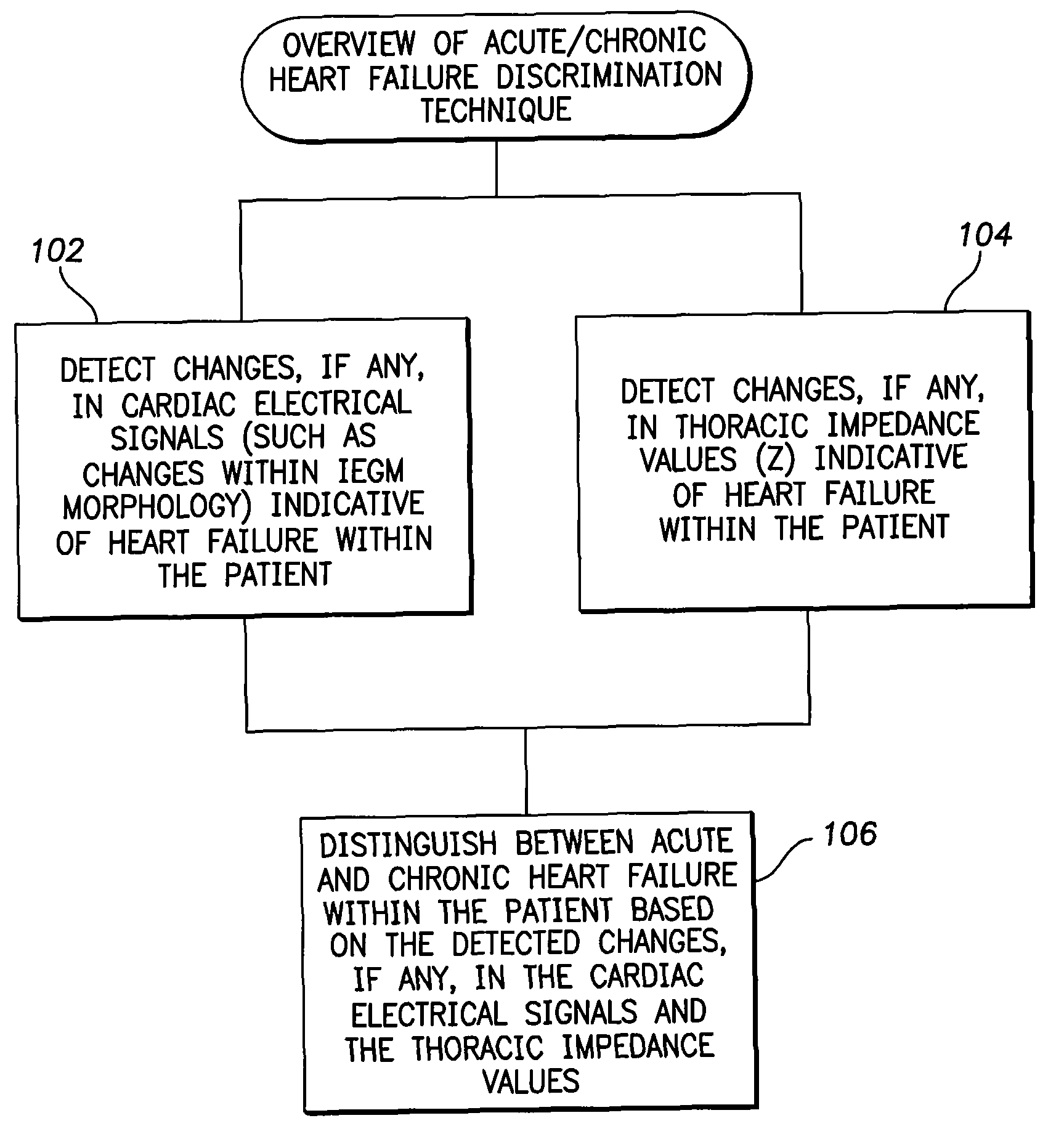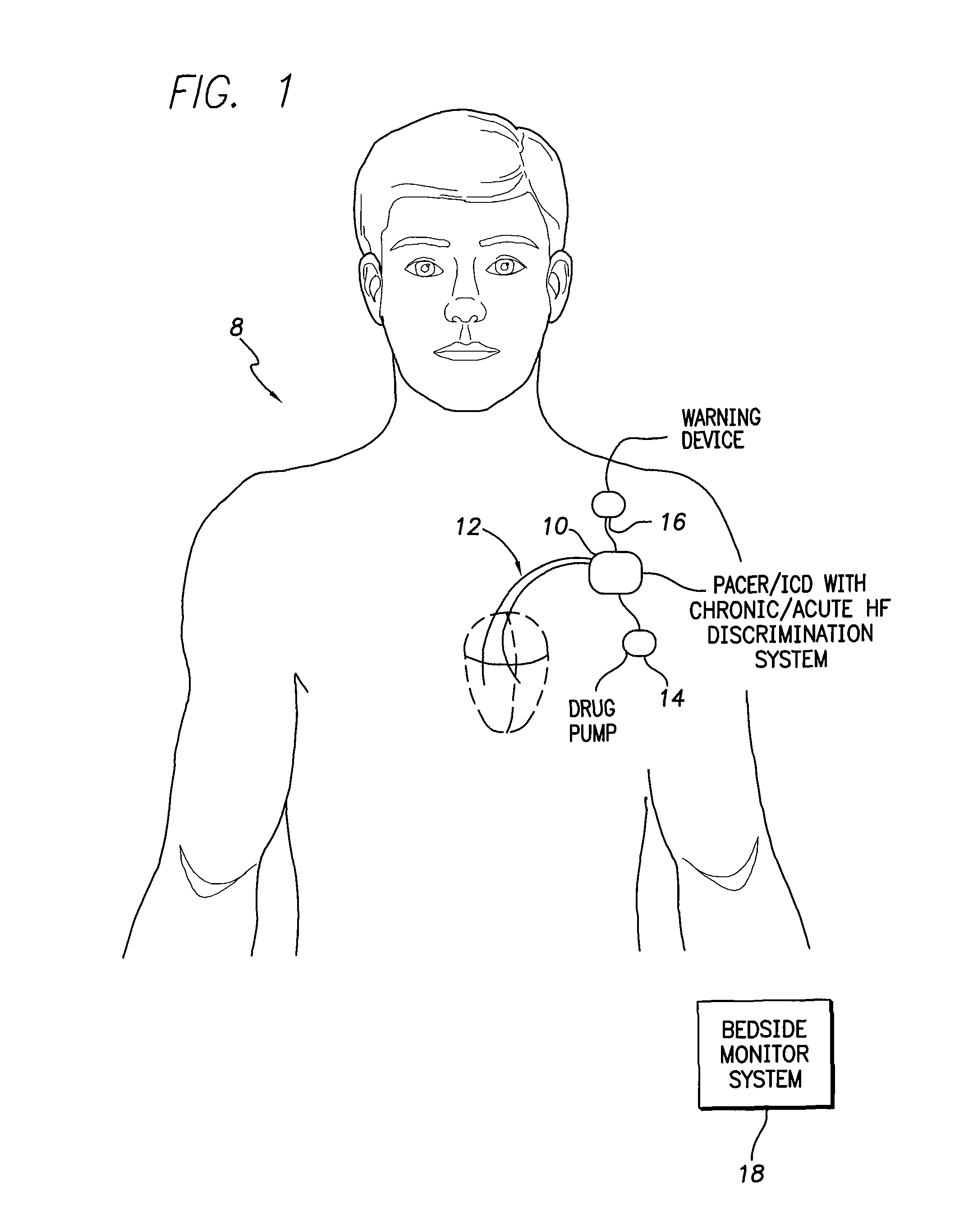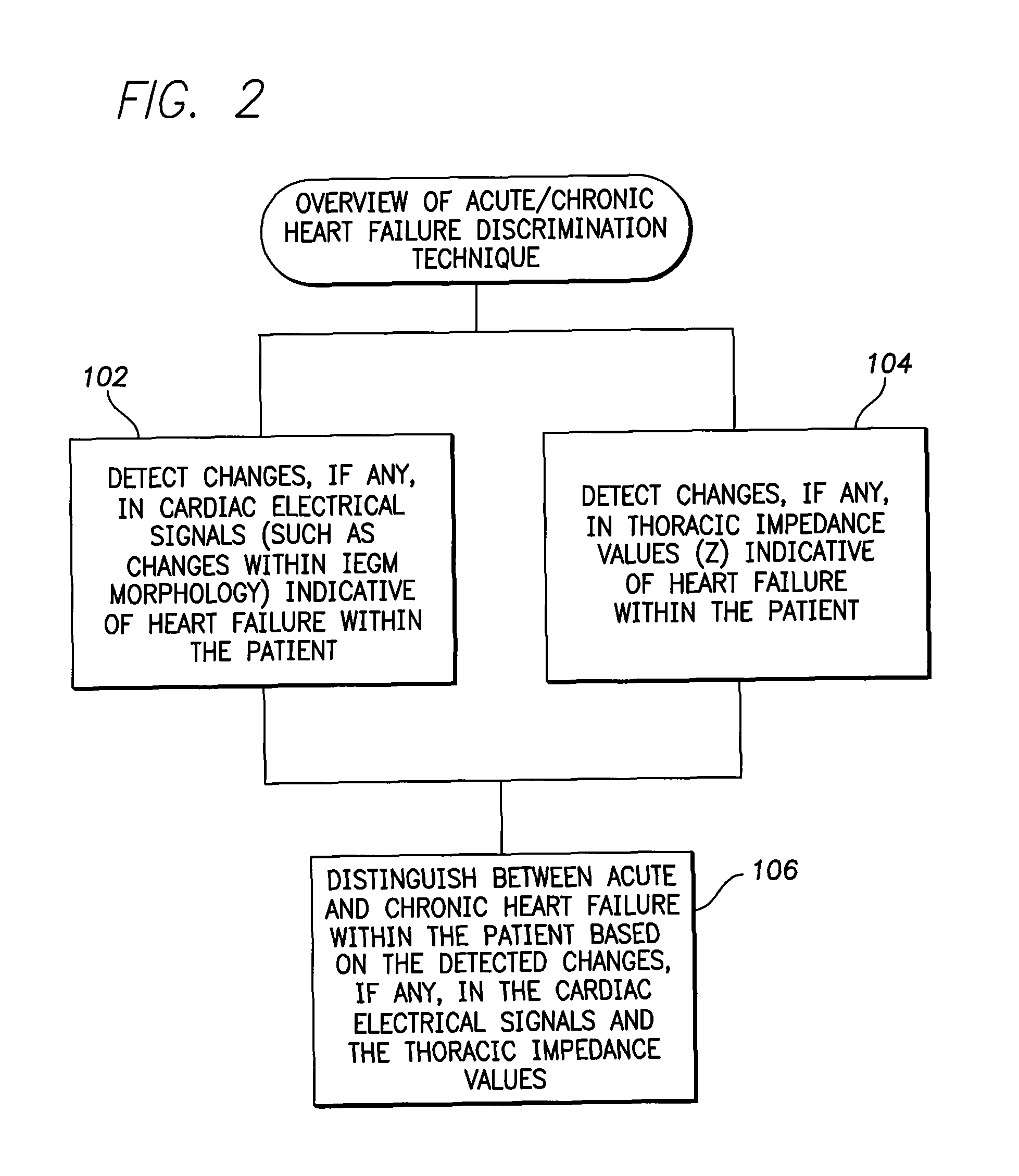System and method for discriminating acute and chronic heart failure using an implantable medical device
a medical device and implantable technology, applied in the field of implantable medical devices, can solve the problems of insufficient ejection or filling of blood in the ventricle, loss of propulsive power of the heart, impairment of arterial circulation, etc., and achieve the effect of immediate corrective action
- Summary
- Abstract
- Description
- Claims
- Application Information
AI Technical Summary
Benefits of technology
Problems solved by technology
Method used
Image
Examples
Embodiment Construction
[0020]The following description includes the best mode presently contemplated for practicing the invention. This description is not to be taken in a limiting sense but is made merely to describe general principles of the invention. The scope of the invention should be ascertained with reference to the issued claims. In the description of the invention that follows, like numerals or reference designators are used to refer to like parts or elements throughout.
Overview of the Heart Failure Discrimination System
[0021]FIG. 1 illustrates an implantable medical system 8 capable of discriminating between acute and chronic heart failure, evaluating its severity and delivering therapy or warning signals in response thereto, as well as performing a wide range of other functions. Medical system 8 includes a pacer / ICD 10 or other cardiac stimulation device equipped with internal components for discriminating between acute and chronic heart failure via a comparison of relatively short-term change...
PUM
 Login to View More
Login to View More Abstract
Description
Claims
Application Information
 Login to View More
Login to View More - R&D
- Intellectual Property
- Life Sciences
- Materials
- Tech Scout
- Unparalleled Data Quality
- Higher Quality Content
- 60% Fewer Hallucinations
Browse by: Latest US Patents, China's latest patents, Technical Efficacy Thesaurus, Application Domain, Technology Topic, Popular Technical Reports.
© 2025 PatSnap. All rights reserved.Legal|Privacy policy|Modern Slavery Act Transparency Statement|Sitemap|About US| Contact US: help@patsnap.com



